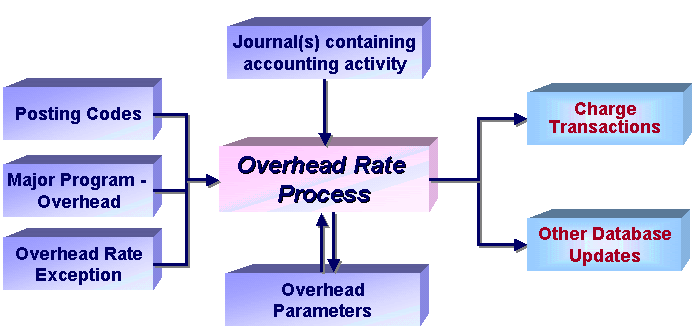
Overhead refers to an ongoing expense of operating a business. The term overhead is usually used to group expenses that are necessary to the continued functioning of the business but that do not directly generate profits. The purpose of the Overhead Rate process is to generate transactions that will record indirect costs for Cost Accounting entities. Those indirect costs may subsequently be eligible for reimbursement by various funding agencies.
The Overhead Rate process is driven by the concept of a pre-defined percentage that is applied to the appropriate direct costs to account for overhead and administrative costs. The pre-defined percentage is usually a rate that is negotiated by the user and their external funding agencies. Indirect cost distribution is achieved by totaling up direct costs, applying the pre-defined percentage, and generating entries to records these indirect costs. With this method, direct costs remain intact and indirect amounts generate additional postings to record the costs. The generated entries are Charge transaction accounting lines that post as one-sided entries to the Cost Accounting Journal.
Note: The Overhead Rate Method is one of two methods that can be used to record indirect costs. The other method is "Cost Allocation" which is described further in the Cost Allocation User Guide. This section only describes the Overhead Rate Method.
Overhead Rate Process Diagram

This section of the user guide includes the following areas: